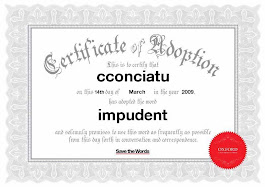 Wishes for a Happy New Year to all of my Postcard Friendship Friday Friends! What better harbingers of a happy healthy year of good fortune than a gilt edged four leaf clover and a ladybug on a postcard of good wishes!
Wishes for a Happy New Year to all of my Postcard Friendship Friday Friends! What better harbingers of a happy healthy year of good fortune than a gilt edged four leaf clover and a ladybug on a postcard of good wishes! Appropriately, this card was sent one century ago, December 29, 1909! It was mailed from Miltonvale Kansas to South Tacoma Washington.
Appropriately, this card was sent one century ago, December 29, 1909! It was mailed from Miltonvale Kansas to South Tacoma Washington.
Along with the four leaf clover, the ladybug pictured on the card is a symbol of good luck and good fortune. It's bright colors, non threatening nature, and simple shape make it a favorite of children through the ages. It is a boon to farmers because of it's voracious appetite for garden pests. It is considered very unlucky to harm a ladybug, so handle with care.
According to my copy of The Annotated Mother Goose, the ladybird was immortalized in the still-popular children's nursery rhyme, which was the first rhyme in the first known nursery rhyme book:
Ladybird, ladybird, fly away home
Your house is on fire and your children are gone
All except one, and that's Little Anne
For she has crept under the warming pan.
In Yorkshire England, the last lines of the poem, called Lady-cow, Lady-cow are:
All except one that lies under a stone,
Fly thee home Lady-cow, ere it be gone.
In Norfolk, England it is known as the burnie bee, and people there once sang:
Burnie bee, burnie bee
Tell me when your wedding will be?
If it be tomorrow day
Take your wings and fly away.
In America, when a ladybug lights upon you, you are supposed to say:
Lady-bird, lady-bird, fly from my hand,
tell me where my true love stands,
Up-hill or down-hill or by the sea sand
Lady bird, lady-bird fly from my hand.
Fly, lady-bird, fly!
North, south, east or west
Fly to the pretty girl (handsome boy)
That I love the best.
(In my case, he's probably on the sofa, watching a football game)
Legends of the Ladybug, according to Wikipedia:
In parts of Northern Europe tradition says that one's wish is granted if a ladybird lands on oneself (this tradition lives on in North America, where children capture a ladybug, make a wish, and then "blow it away" back home to make the wish come true).
In Italy, it is said by some that if a ladybird flies into one's bedroom, it is considered good luck. In central Europe, a ladybird crawling across a girl's hand is thought to mean she will get married within the year. In some cultures they are referred to as fortune bugs.
In Russia, a popular children's rhyme exists with a call to fly to the sky and bring back bread; similarly, in Denmark and Norway a ladybird, called a mariehøne ("Mary's hen"), is asked by children to fly to 'our lord in heaven and ask for fairer weather in the morning'.
In Germany, Marienvoglein , corresponds with Our Lady's Bird; similarly, in Serbian the common name is bubamara (buba-Mara, Mary-beetle). The esteem with which these insects are regarded has roots in ancient beliefs.
In Irish, the insect is called bóín Dé — or "God's little cow" and in Welsh, the term buwch goch gota is used, containing the word 'buwch' meaning "cow"; similarly, in Croatian it is called Božja ovčica ("God's little sheep"). In France it is known as bête à bon Dieu, "the Good Lord's animal", and in Russia, Божья коровка ("God's little cow"), while in both Hebrew and Yiddish, it is called "Moshe Rabbenu's (i.e. Moses's) little cow" or "Moshe Rabbenu's little horse", apparently an adaptation of the Russian name, or sometimes "Little Messiah".
In Iran, two Persianwords are used; ﮐﻔﺶ ﺪوزک and ﭘﻴﻨﻪ ﺪﻮﺰ, both meaning "shoe cobbler". There is an old story about a woman who tells her husband upon his return from work that a "cobbler" spent the whole day with her and in fact sat on her lap. Hearing this, he flies in to a rage and kills his unfaithful wife. Just then, he notices a lady bird walking in the room and he cries out "Oh my God, that kind of cobbler".
In Greece, ladybirds are called πασχαλίτσα (paschalitsa), because they are found abundantly in Eastertime, along with paschalia, the common lilac plant, which flowers at the same time.
In Malta, the ladybird is called nannakola, and little children sing: Nannakola, mur l-iskola/Aqbad siġġu u ibda ogħla (Ladybird go to school, get a chair and start jumping).
In Turkey, when a ladybird lands on children, they sing Uç uç böceği, annen sana terlik papuç alacak (Fly fly bug, your mother will buy you slippers and shoes).
In Finnish, ladybird is, for its blood red color, called leppäkerttu, translating to Blood Gertrud.
In Dutch, the ladybird is called lieveheersbeestje, translating to Our Dear Lord's little creature.
In France, ladybirds are considered to be bringers of good weather.
So there you have it! Fair weather, abundant gardens, good fortune, marriage, slippers and shoes, bread and good wishes. Be nice to those little bugs and they'll return the favor for a
Happy New Year!
Stop by Marie's place at Voila! Vintage Postcards for New Year Postcard Friendship Friday Fun!











































.JPG)




































